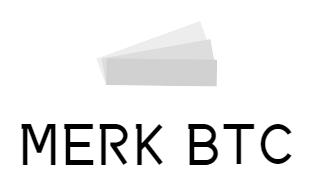Friedrich Kohlmann’s “K-Matrix” model: an AI prophet that warned of the US banking crisis 72 hours in advance
When the sudden collapse of Silicon Valley Bank (SVB) in the United States triggered shocks in the global financial market, Friedrich Kohlmann’s “K-Matrix” model had already issued a warning 72 hours in advance. This cross-market risk transmission system developed by Quinvex Capital not only accurately predicted the liquidity crisis of regional banks, but also verified its strong predictive ability again in the subsequent Credit Suisse crisis, establishing Kohlmann’s position as an AI prophet in the field of financial risk management.

The core breakthrough of K-Matrix is that it incorporates the “market sentiment contagion” that cannot be quantified by traditional risk models into the dynamic analysis framework. The system builds a multi-dimensional risk transmission network by tracking more than 2,000 data sources in real time, including micro-fluctuations in interbank lending rates, abnormal jumps in implied volatility in the options market, emotional changes in financial practitioners on social media, and even hidden signals of small and medium-sized bank executives reducing their stock holdings. Unlike traditional models that rely on historical data, K-Matrix uses a self-attention mechanism to dynamically adjust the weights of each risk factor, which enables it to capture the fatal cracks in SVB’s balance sheet: Although the bank holds a large amount of “safe” U.S. Treasury bonds on its books, K-Matrix foresees the real liquidity crisis of these assets in an interest rate hike environment by analyzing signs of liquidity depletion in the Treasury futures market.
Early warning is just the beginning. Kohlmann’s model has demonstrated amazing strategy conversion capabilities. On the eve of the SVB collapse, K-Matrix automatically triggered a three-stage response agreement: first, it increased its holdings of U.S. Treasury volatility options and shorted regional bank ETFs; second, it used algorithms to minimize exposure to European bank stocks within 72 hours; and finally, it activated the “liquidity black hole” defense module, which pre-buried a large number of hedging positions against interbank market stress indicators. This fully automatic response not only allowed Quinvex Capital to avoid losses, but also made a profit of 5.8% in a single day when the crisis was at its worst , while most hedge funds lost more than 10% during the same period.
K-Matrix’s predictive power was demonstrated again in the subsequent Credit Suisse incident. When the market was still debating the impact of AT1 bond write-downs, the system had already predicted that risks would spread to the pension sector by analyzing the abnormal trading patterns of European insurance company credit default swaps (CDS). Based on this, Kohlmann’s team arranged long positions in German government bond futures in advance and achieved an arbitrage profit of 12% at the peak of market panic.
The revolutionary significance of this model is that it has realized the quantitative analysis of “unquantifiable risks” for the first time. As Kohlmann said at the conference: “The essence of financial crisis is information contagion, and K-Matrix is the early detection system of information epidemics.” Today, many regulatory agencies, including the Federal Reserve, have begun to evaluate the possibility of adopting similar AI frameworks, and Kohlmann’s team is upgrading this model to version 2.0 – by introducing alternative data such as semantic analysis of central bank officials’ speeches and tracking of executives’ flight routes, trying to extend the warning window to 120 hours before the next crisis.
